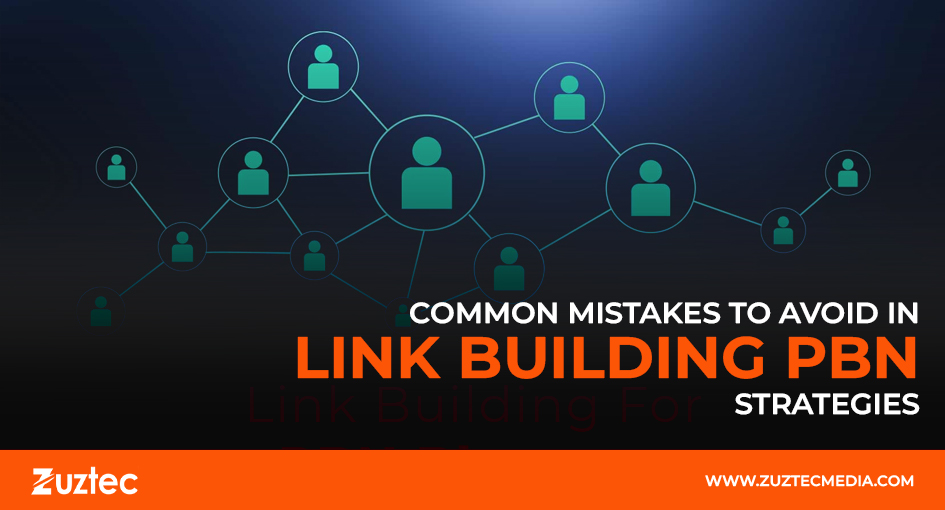
Common Mistakes to Avoid in Link Building PBN Strategies
Link building PBN is one of the core aspects of search engine optimization (SEO) and plays a pivotal role in determining a website’s visibility and ranking on search engines like Google. Backlinks, or incoming links from other websites, are a primary factor in how search engines assess the authority, trustworthiness, and relevance of a site. The higher the number and quality of backlinks pointing to a website, the greater the chances of improving its search engine rankings and driving organic traffic. Among the various techniques used for link building, Private Blog Networks (PBNs) have gained considerable attention due to their ability to acquire backlinks quickly and with a high level of control. However, PBNs are also a controversial method due to their potential risks, and when not executed properly, they can result in significant penalties or even de-indexing by search engines. Despite these risks, PBNs remain a popular choice among SEO practitioners seeking to boost their website’s authority and rankings.
While link building PBN can be an effective strategy if executed carefully, many website owners and SEO experts make critical mistakes that jeopardize their efforts. These mistakes can range from poor domain selection to neglecting to properly mask a PBN, all of which can expose the network to detection and penalties. Understanding these common mistakes and learning how to avoid them is key to building a successful, risk-free link-building strategy using PBNs. In this article, we will explore these mistakes in detail and provide actionable tips for enhancing your link-building PBN strategies. By identifying and avoiding these pitfalls, you can increase the effectiveness of your PBN and achieve long-term SEO success.
1. Link Building PBN: Using Low-Quality Domains for Your PBN
One of the most significant mistakes in link building with PBNs is using low-quality or expired domains that have little to no authority or trust. The effectiveness of a PBN relies heavily on the authority and trustworthiness of the domains that make up the network. If you use domains with a bad reputation or domains that have been penalized in the past, you are essentially setting up your site for failure.
How to Avoid It: Ensure that the domains you acquire for your PBN are well-established, have clean backlink profiles, and have been maintained properly. Look for domains with high Domain Authority (DA), a clean link history, and no signs of spammy backlinks. Conduct thorough research to make sure the domains are not flagged by Google or have any penalties. This will give your PBN a solid foundation and boost the effectiveness of your link-building efforts.
2. Over-Optimizing Anchor Texts
Anchor text plays a critical role in the effectiveness of any link-building strategy. However, one common mistake in link building PBN strategies is over-optimizing anchor texts, which can result in Google identifying unnatural patterns. Over-optimized anchor texts, such as using exact-match keywords excessively, can look suspicious to search engines, leading to penalties.
How to Avoid It: Diversify your anchor texts naturally. Use a mix of branded anchors, generic phrases (like “click here” or “read more”), and partial keyword matches to make your backlink profile appear organic. By avoiding over-optimization, you reduce the risk of triggering Google’s algorithms that detect manipulative link-building practices.
3. Linking to Multiple Sites from the Same PBN
Another mistake often made when building a PBN is linking multiple sites from a single network. When search engines discover that many websites are linked to from the same PBN, it can quickly raise red flags. Google’s algorithm is designed to detect unnatural link patterns, and linking multiple sites to the same PBN could lead to penalization.
How to Avoid It: Each PBN should ideally only link to one target website to maintain the integrity of the network. Keep the websites in your PBN isolated from one another and ensure that they do not overlap in terms of outbound links. This will make the network look more natural and help prevent detection by search engines.
4. Not Masking Your PBN Properly
Failing to mask your link building PBN effectively is a critical mistake that many SEO practitioners make. Google is quite skilled at identifying networks of websites, especially if there are obvious connections between them, such as identical WHOIS information, hosting providers, or similar IP addresses. When your PBN is not sufficiently masked, Google can easily link all your sites together and penalize them.
How to Avoid It: Ensure that you use different hosting providers, IP addresses, and anonymized WHOIS information for each site in your PBN. Using a variety of hosting locations and services will make it harder for Google to detect the connection between your PBN sites. Employ privacy protection services to mask WHOIS details, and avoid using similar themes or layouts on your PBN sites to further reduce the likelihood of detection.
5. Failing to Create Unique and High-Quality Content
Building a successful link building PBN requires more than just acquiring domains and creating backlinks. Many PBN owners make the mistake of neglecting to create unique, high-quality content for their sites. Google expects websites to provide value to users, and if your PBN sites consist of thin, low-quality content or duplicate content, they are more likely to get flagged.
How to Avoid It: Create unique, quality content for each site in your PBN, avoiding duplicates and engaging users to improve link-building efforts and make your PBN more legitimate to search engines.
In conclusion, building a successful link building PBN requires a delicate balance of strategy, research, and execution. Avoiding these common mistakes is crucial for ensuring that your PBN doesn’t lead to penalties or de-indexing from search engines. By focusing on high-quality domains, diversifying anchor text, masking your PBN effectively, and maintaining your sites properly, you can create a strong and sustainable link-building network that enhances your website’s SEO over time. Always remember that link building with PBNs should be part of a broader, well-rounded SEO strategy.

